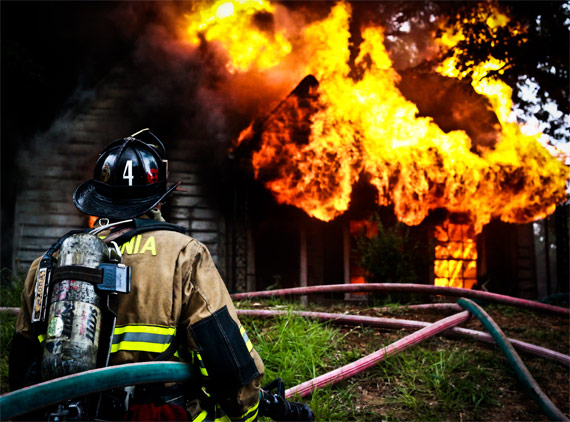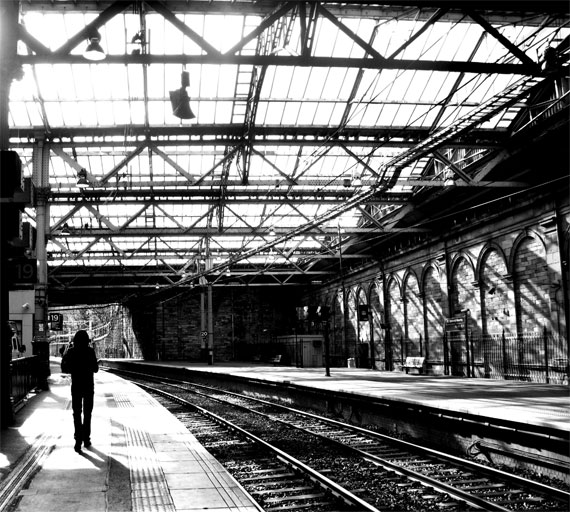 |
Posted: 08 Mar 2012 10:32 PM PST They say that a picture is worth a thousand words. That means that your photographs should be a great way for you to communicate. The question is, do your photographs communicate the right thousand words to tell your story? Have you ever had the experience of photographing in a wonderful place, feeling eager to rush home and look at your pictures, only to be disappointed in the results? It’s quite a challenge to convert a three-dimensional, full sensory experience into a two-dimensional photograph. I would like to share a few tips on composition that I think can boost your success rate in capturing your experience while photographing. Instead of just raising your camera for a quick snapshot, take the time to make a careful composition that will guide your viewer to understand what you think is important in the scene, and even how you feel about it. Tip #1: Choose colors and tones that reinforce your story Light is the fundamental building block of any image. Light produces two kinds of contrast: color contrast and tonal contrast. Color is the hue that you see, like red, or green, or purple. Tone is another word for brightness, or how light or dark something is. Our brains are good at forming associations, and we associate colors and tones with particular feelings. These same associations appear in our spoken language. You’ve heard the expressions, “He was in a dark mood,” and “She was feeling blue. Blue connotes melancholy, or tranquility. It is also a color associated with stability and reliability. (What color are the logos of IBM, Microsoft and Ford?) Red is the color of passion. Photographing an orange beach umbrella will give a stronger impression of a hot day that would photographing a purple one. Using dark tones will create a sense of gloom and foreboding. Light-toned images make us feel light-hearted and uplifted. Consider carefully whether the tones and colors in your image strengthen the story you want to tell, or contradict it. Tip #2: Use lines to guide your viewer’s eye Color and tone also reveal lines in your image. Lines are the boundaries created where two contrasting colors or tones meet. A thin shape, like a road, the stem of a plant, or a tree branch, may also be perceived as a line in your photograph. The brain’s visual cortex is programmed at a fundamental level to follow lines. This is a powerful tool for you as a photographer. You can guide your viewer’s eye toward what you consider important in the image by using something in the environment to point to it. Conversely, be careful not to inadvertently place lines so that they lead your viewer out of the image. Tip #3: Orient the lines in your image so that they convey the right emotion Just as with colors, our brains also make emotional associations with line orientation. Vertical lines in an image give an impression of power, strength and pride. Horizontal lines are stable and calm. Diagonal lines, on the other hand, are dynamic, and signify motion or change. Curved lines may convey a sense or melancholy, or of hope, depending on the direction in which they curve. Think carefully when composing your image so that you include colors, tones and lines that reinforce the story you are trying to tell. You will be much more likely to create a photograph that captures and communicates how you felt when you were observing the original scene. About the Author: For a thorough discussion of how you can use color, tone, lines and shapes in your photography to better tell your story, check out my eBook on picture composition: “Story Telling Through Visual Design.” It’s illustrated with loads of beautiful, full color photographs that provide examples of all the concepts, and inspire you to tell your own photographic stories. Start taking “wow” pictures today! For Further Training on Photography Composition, PictureCorrect Suggests:Look at Photo Nuts and Shots – Tools and Techniques for Creative Photography by Neil Creek; a very popular instructional eBook with a reputation for being the ultimate creative photography primer. It is designed to teach you how to harness light to convey emotion, understand the rules of composition … and know when to break them, take the sharpest possible photo every time, adapt the camera's exposure to produce the shot you want, master the concepts of shot perception, planning, and execution — in any setting, and tap into your unique creativity to take evocative photographs that reach out to viewers.It can be found here: Photo Nuts and Shots eBook Go to full article: Photography Composition Tips: How to Tell a More Compelling Story What are your thoughts on this article? Join the discussion on Facebook or Google+ Article from: PictureCorrect Photography Tips |
Posted: 08 Mar 2012 11:46 AM PST Black and white photography may appear to be simplistic but the art of taking a rich, balanced monochrome image is a bit more complicated. The following clip gives a few pointers on how to create effective, high contrast images. Take a look (for those of you reading this by email you can see the video here): “Contrast is what black and white is all about”To create that contrast, Morgan calls on his Hensel Porty Pack to power a key light which is used in combination with a softbox. He also hangs a silk to filter the ambient light, thus softening the hard sun. Morgan also prefers to blowout the background, resulting in sharp silhouettes. To light the model’s faces, he brought out a beauty dish and placed a grid on it which allows a controlled light output from the strobes. When dressing the models, remember you can’t rely on colors to create separation from the background when shooting in black and white. If you will be photographing on a light background, choose dark clothing to create depth.  Professional Black & White Techniques For Further Training on Black & White:Look at this best-selling eBook training package on B&W which includes a masterclass on post-processing. It can be found here: Black and White TrainingGo to full article: Professional Black and White Photography Tips What are your thoughts on this article? Join the discussion on Facebook or Google+ Article from: PictureCorrect Photography Tips |
Tags:
Photography Tips








0 comments:
Post a Comment